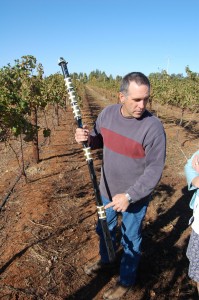“By 2025, 1.8 billion people will be living in countries or regions with absolute water scarcity, and two-thirds of the world’s population could be living under water stressed conditions. The lack of water limits farmers’ ability to produce enough food to eat or earn a living.” – UN World Water Day 2012 website

One man roasting a goat, six others giving direction. Borrowed from Lizzie King, who has spent many years studying rangeland restoration with the Maasai of Kenya.
Water and Food Security is the theme of World Water Day – March 22nd, 2012. Every food crop, all meat production, and inland fisheries from Amsterdam to Zanzibar depend on water.
Here, food security once meant the annual migration of millions of sockeye, traveling up the Okanagan River. Fish, wild berries, and game were reliable food for Okanagan peoples for millennia. Now, with 300,000 people in the valley, food security is (like most other places) mostly about land and irrigation water. Continue reading



